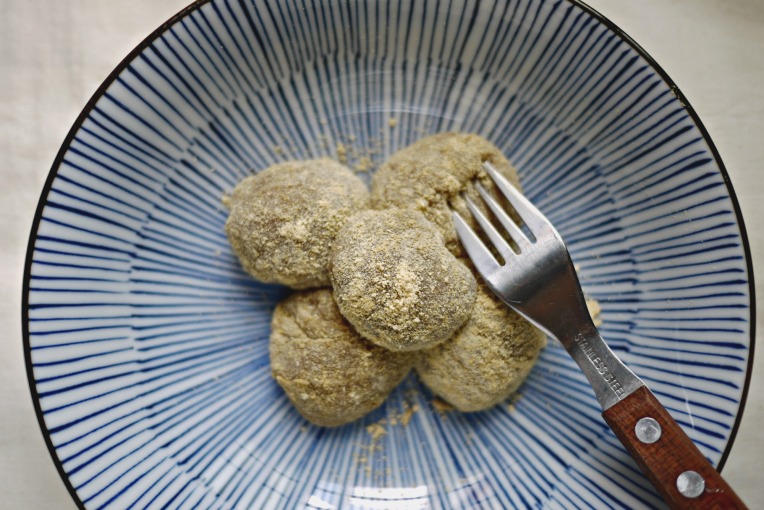





How easy is easy?
Mixing flour, sugar and water takes a minute.
Cooking? 15 minutes of steaming.
Cool down. Coat with kinako, chop up into bite size with pastry scraper and serve . Done.
Easy right?
I like this recipe that uses brown sugar instead of white sugar. The amount of sugar used in making mochi is quite a lot, this recipe doesn’t yield much. My family of 4 can chow down the entire bowl under 5 minutes. That is 4 tablespoons of sugar consumed in total. I had to resist the temptation to make more after we are done with one batch.
And resisting the urge to make more is the hardest part when this recipe is so easy.
EASY MOCHI WITH KINAKO
adapted from here 100g glutinous rice flour 60g dark brown sugar ** 180g water 2 tablespoons kinako ***
** I use the kind of brown sugar (actually it is black sugar 黑糖 in mandarin, but the label never says black in English, always brown) that I always use for making ginger tea (黑糖姜母茶) , not those for coffee or cakes. Get those in granulated form, not the rock version.
*** If kinako is not available, potato starch can also be used as mochi coating.
In a bowl, mix flour, sugar and water with a small hand whisk till sugar complete melted.
Place in a steamer with boiling water and steam for 15 minutes. Cover the bowl with a clean cloth to prevent condensation forming on the top of the cover from dripping down on the mochi.
While the mochi is cooking, sieve the kinako, spread them over a large plate or tray. Once the mochi is cooked, remove it from the steamer, and let it cool slightly. When the mochi has cooled down enough for you to handle, scrap out the sticky mochi as one big piece onto the tray of sieved kinako. Dusting the top of mochi with kinako will make the mochi now manageable with bare hands since they won’t stick anymore. You can shape the mochi into balls, or keep things simple like me, just flatten them up a bit, and chop them into bite sized pieces with a pastry scraper. Move them around to coat with more kinako, before transferring them to a serving dish.
Best eaten fresh, though I have read that they keep well in fridge, covered, to prevent drying out.
